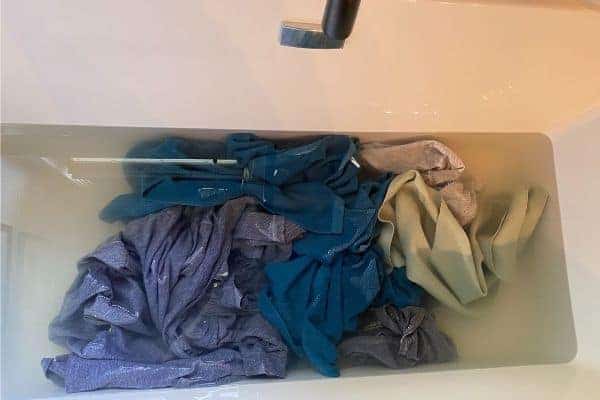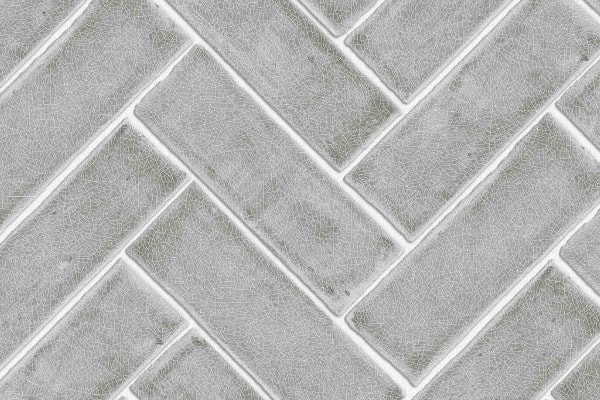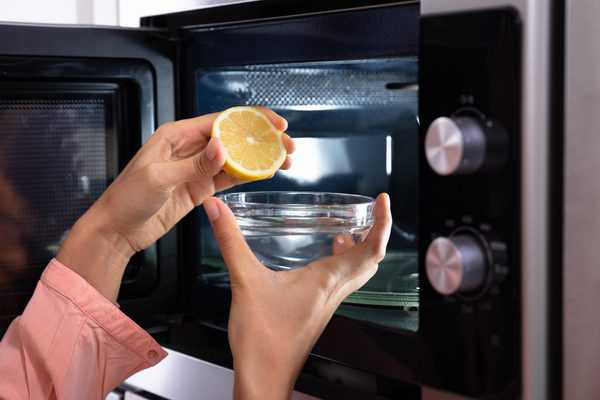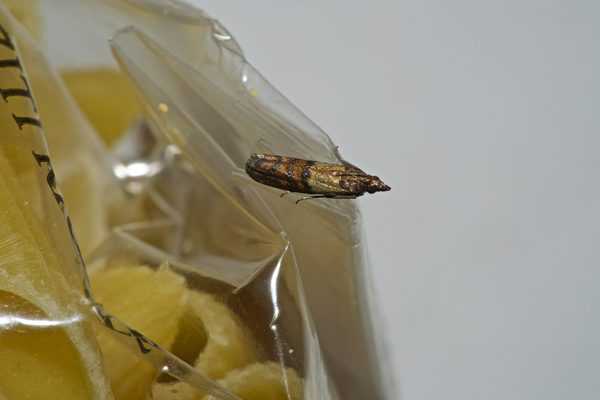Laundry stripping 101
I love a good deep cleaning hack, so when I came across this new trend of laundry stripping, I was all ears.
If you haven’t already seen this latest cleaning phenomenon, laundry stripping is the process of ridding your clothes of deep seated stains, oils and detergent build up.
Does laundry stripping work?
Yes, laundry stripping works to remove hard water and detergent build up, body oils and odors. Additionally, if you have smelly towels or clothes that seem “dingy” laundry stripping can help make them soft again.
How to strip laundry, a step-by-step process
This post contains affiliate links. Read our policy here.

Believe it or not, a chemical reaction actually takes place during this mutli-step laundry stripping process, so make sure to follow these directions closely.
Step 1: Wash clothes like normal
For best results, I would use powdered detergent when you wash your clothes, and finish up by adding white vinegar to the rinse cycle.
When you dry the clothes, skip any fabric softeners that you typically use, as they only work to add build up to the clothes–which is exactly what we’re trying to get rid of when we strip laundry. A better alternative (and toxin-free, I might add) is to use wool dryer balls.
Step 2: Start the soak process
Use your bathtub or a large bucket and fill with the hottest water you can get. It’s not a bad idea to boil a large pot of water and add that to the soak, too.
Step 3: Add borax, washing soda and powdered detergent
Add 1/4 cup borax, 1/4 cup washing soda and 1/2 cup laundry detergent to the hot water and stir to mix.
Step 4: Add in items
Add in items of like colors to the soak. Do not soak anything with heavy dyes in it as this process will pull out the dye and stain other clothing.
Step 5: Soak
Keep soaking the laundry until water has completely cooled, which should be about 4 to 5 hours. Each hour or so, stir the water and laundry around during the soaking process.
Step 6: Drain and rewash
Once the water has completely cooled, drain and rewash clothing in the washing machine. Again, avoid using liquid detergent and instead use powdered, and skip dryer sheets in the dry cycle.
How often should I strip my laundry?
Most people say they can get away with just stripping their laundry following this process about once or twice a year.
What can be done to keep clothes fresher longer?
There’s many things you can do to keep clothes and towels fresher longer; here are some quick tips:
- Stop using liquid detergent (especially if you have a front loader). Liquid detergent contributes to gunk in your front load washer and it also deposits more of build up on your clothes than powder.
- If you absolutely must use liquid detergent, use far less than what you were doing. HE detergent is very concentrated and you really don’t need to use that much!
- Occasionally add in vinegar to your rinse cycle. I find this helps give my detergent a little boost!
- Quarterly add in 1/2 cup borax in place of detergent and add vinegar to the rinse cycle.
- Stop using dryer sheets! Dryer sheets are notorious for generating quite the build up of gunk on our clothes. Swap out dryer sheets for dryer balls.
- Make sure your washer is clean. Front load washers are hard to keep clean and often have a build up of gooey gunk in the drum. Here’s a step by step process on how to clean your front load washing machine.
If you’re interested, I also wrote an entire post on how to get mildew smell out of towels, too.
What items are best for laundry stripping?
If you’ve got towels that are hard and scratchy and/or smell like mildew, laundry stripping is a perfect solution to restore them to their former glory.
Likewise, sheets, workout clothes and old t-shirts could all benefit from laundry stripping, too–as these items commonly have stains and smells that build up over time.
Laundry stripping recipe
Laundry stripping recipe

Ingredients
- 1/2 cup powdered laundry detergent
- 1/4 cup borax
- 1/4 cup washing soda
- 1/4 cup calgon (optional)
Instructions
- Wash clothes in hot cycle with powdered detergent and dry without dryer sheets
- Fill bathtub with hot water
- Mix in ingredients and stir until dissolved completely
- Add in laundry (like colors only)
- Let soak for 4-5 hours while water cools, occasionally stirring every hour or so
- Drain water and wash clothes in washer using powdered detergent
- Dry without dryer sheets
Notes
Calgon is sometimes hard to find and while it does help to strip away hard water deposits, is not completely necessary. Borax usually does the job well enough if you can't find Calgon.
Do not use liquid detergent in this recipe, powdered only. I find Tide works the best.
Water will likely be very dirty after the soak is complete.
Can I use liquid detergent for laundry stripping?
No, you must use powdered detergent.
What can I use instead of borax for laundry stripping?
If you’d prefer you can use a product called Fels Naptha which can be found on amazon. A lot of people use this product to make their own detergent and it also works great in place of borax while stripping laundry. Simply grate about 1/4 cup into the hot water to use instead of borax.
P.S. If you don’t already have Fels Naptha in your cleaning arsenal, you should add it..it’s the best thing I’ve come across in terms of stain removal!
Can I use baking soda to strip laundry?
While baking soda isn’t the same as washing soda, you can actually create washing soda from baking soda…crazy, right?! To do this all you need to do is pour a layer of baking soda onto a rimmed baking sheet and bake for 30 minutes to an hour on 400. Allow to cool and store in an air-tight container.







 Skip to Recipe
Skip to Recipe
Thank you for the detailed explanation; especially the substitutes.
Wouldn’t using hot water shrink clothes? I’m hesitant to do this because of that. We cannot afford to ruin our clothes simply because we used hot water.
This is typically for towels and things of that nature. I have done this exact process with towels and my husbands work shirts and haven’t had an issue at all. Perhaps just use warm water if you’re worried.